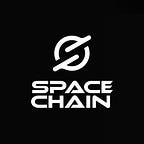The International Space Station: 5 agencies, 15 countries, 1 vision
Having the distinction of being the largest (and most expensive) structure that mankind has ever launched into outer space, the International Space Station (ISS) is so much more than an impressive backdrop for blockbuster sci-fi movies.
So how did the ISS come to be, what goes on within its confines and how is the low-orbiting spacecraft being leveraged by the community to open up the space industry to the greater public?
Backed by major superpowers of the modern world
Presided over by intergovernmental treaties/agreements and touted to be one of the most politically complex international endeavours ever embarked upon to date, the ISS Program was launched in 1998 by the U.S., Russia, Canada, Japan, and 14 other participating countries of the European Space Agency (ESA).
These nations have been backed by the technological know-how of five notable space agencies, NASA (United States), Roscosmos (Russia), JAXA (Japan), ESA (Europe), and CSA (Canada).
So much more than just a laboratory in outer space
Although initially launched largely as a research laboratory to discover the long-term effects of zero gravity on the human body and to help plan for longer space missions, the station has rapidly evolved into taking on the mantle of being a hub for commercial, diplomatic and educational purposes.
The ISS has been a continuous work in progress since its inception in 1998, maintaining constant human inhabitation to steadily build upon the floating orbit’s facilities and pave the way for advancements in space.
Opening up of the playing field
One of the major issues that has kept barriers to entry high across the space industry has been cost — the sphere being typically managed by governmental agencies and a few commercial giants that have not provided room for inclusivity.
This situation is changing rapidly, however, with technology allowing entry into space through the help of cost-effective value-added operations thanks to organisations like SpaceX and Nanoracks. This has created opportunities for companies like SpaceChain to attach payloads onto their rockets at a fraction of the cost.
In December 2019, SpaceChain is sending a payload aboard a SpaceX Falcon 9 rocket to the ISS. This payload on the ISS furthers its mission to advance science exploration and peaceful collaboration. SpaceChain’s vision, in fact, is to remove barriers and allow a global community to access space for innovation.
Spacechain is building an ecosystem that surpasses geographies, and forming a satellite constellation that costs less, all governed in a decentralised way. With such access to space being unfeasible a decade ago, the opening up of the industry will only serve to create a whole new model for governance that will make peaceful collaboration in space possible.
Space enthusiasts can sign up to get notified on a list of upcoming ISS sighting opportunities based on their current location here.
Follow us on Twitter for live updates and an upcoming announcement on the date and time of the launch, and subscribe to our newsletter for valuable content and the latest news about the project.
You can also keep up-to-date with SpaceChain’s exciting developments via the Updates section of our website or join in the conversations on our Telegram channel.
